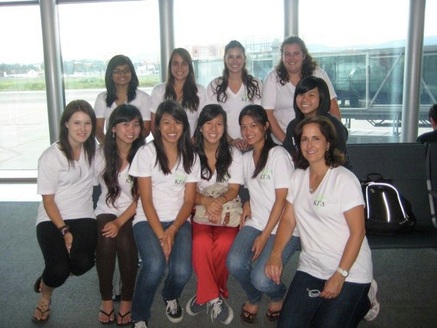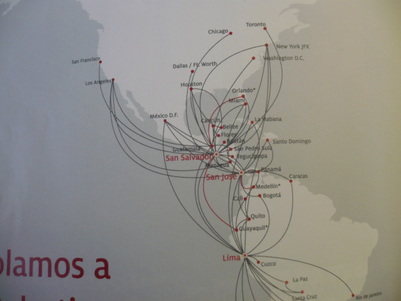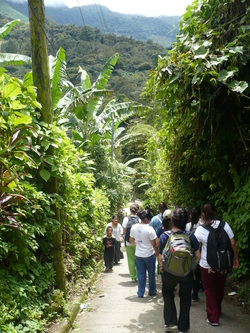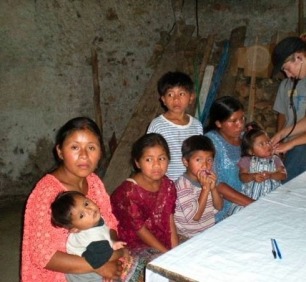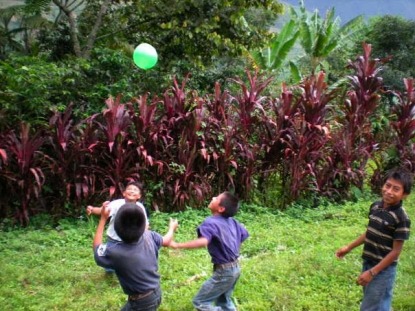Journey to Guatemala
Service Abroad Summer 2010
Tamahu is a municipality in the Guatemalan department of Alta Verapaz.
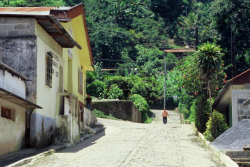
As a pre-med organization, Kappa Gamma Delta will be sending some of its members on a missionary trip to a small town in Guatemala. Once there, we will be working in a small clinic, providing help in a small pre-school that was recently started, going into the mountains and near-by villages to conduct follow-up evaluations on children who have left the school, and giving presentations on personal hygiene to both adults and teens. We will be there for a total of 9 days working and volunteering in whatever way we are needed.
It is important that trips such as this take place because there are so many unknown areas around the world who need attention, and very few actually receive it. We are fortunate enough to have found such a place where we are able to travel and help. The goal of this mission trip is to help and serve in any way we can. It's not in how big of a difference we make, but in making the people there feel that they are not alone and that people care about what happens to them. The purpose of this mission is to not only educate ourselves in third world medicine and living conditions, but to also learn to give and serve with an open heart knowing that these people need our help and attention more than we will ever fully know or understand.
It is important that trips such as this take place because there are so many unknown areas around the world who need attention, and very few actually receive it. We are fortunate enough to have found such a place where we are able to travel and help. The goal of this mission trip is to help and serve in any way we can. It's not in how big of a difference we make, but in making the people there feel that they are not alone and that people care about what happens to them. The purpose of this mission is to not only educate ourselves in third world medicine and living conditions, but to also learn to give and serve with an open heart knowing that these people need our help and attention more than we will ever fully know or understand.
What was it like?
Check out this brochure if interested! :)
1. Location
1.1 San Pablo Tamahu is a small Town located at the mid Northwest part of that Country, with a population of about 1,500 inhabitants. The Town population is made almost totally of "mestizo" people (mix of Mayan Indian and Spanish descendants), who made their living out of the purchasing possibilities of the aborigines living on nearby villages.
1.2 Tamahú (as it is called locally, pronounced Ta-ma-hoo), is on a high area of the Guatemala range of mountains, located precisely on a gorge surrounded by those mountains. It receives the results of torrential storms throughout the year; even though there are not exact statistics, a 200 inch/year precipitation guess is not far fetched. As a result, air is pure, skies are blue anytime it is not pouring and generally nights are peaceful with a star-studded sky.
2. Communications
2.1 Out of Guatemala City -the Country Capital-, there is a reasonable good highway (two lanes, no divider) that runs meandering North-Northeast; to locate this place you have to look first for the Province´s Capital City, Cobán.
2.2 Cobán has the attraction of all small Towns and Villages around and thus, has an extensive market, Banks, Stores, Restaurants and, what is very important, "Cybercafes"!
2.3 About 4 hours driving from Guatemala City, by the 180 km. sign (112 miles), there is a Gas Station upon which we leave the paved main highway and embark into a bumpy dirt road for about an hour, to the West. This "crossroad" is approximately 30 miles South of Cobán.
2.4 At your arrival, most probably either a minibus or a Mission representative will pick you up at the Airport and drive you to Tamahú. If nobody is able to pick you up, I will let you know in advance, and you will ride the bus from Guatemala City to Cobán and leave the bus at the "crossroad". In such a case, we wait for the next "micro-bus", which is a regular van truck that has been transformed into passenger loading and in which you have to ride materially crushed for the remaining of the "road" along with 20 more passengers inside the theoretical 9 passenger vehicle. It is not only fun, but incredible to discover at every turn of the road beautiful waterfalls bursting with clear water with deafening noise, surrounded by bamboos, banana trees and all sorts of greenery.
2.5 Once in Tamahú, transportation is basically made the same way a zillion years ago men started to trek: walking. Walking every which way but horizontally becomes the daily staple of activities, and having such a precipitation during the year, mud is the main enemy in the daily walking adventures to the villages –called ¨aldeas¨- up there above the clouds; that's the reason for bringing rubber boots.
2.6 The Mission truck is normally dedicated for purchasing, banking and for transporting sick people from the villages to the Hospital in Cobán.
3. Cultural Aspects
3.1 Population in the general area, besides the "mestizo" component of the Town, is basically of native Mayan descendants. All of them speak Mayan dialects, which are the P´oqom´chi and the Q´eq'chi. Those dialects are spoken -one or the other-, by the local "mestizos", as well as some of the Missionary Priests and the Cathechists.
3.2 On each "tribe" or "ethnical group" , women wear a special and different type of dress, usually each tribe has an specific design and colors that distinguish them from afar, so it's easy to identify a group of people just looking at the women dresses or headdresses.
3.3 Men all wear a more "westernized" clothing, and while women use rubber and plastic sandals (when not barefoot), all men wear rubber boots.
4. Languages
4.1 About 70% of the Villages belong to the Q´eq'chi and speak that dialect; many of them are Roman Catholic, and live in the eastern areas of the mountains. The P´oqom´chi live on the Western side of Tamahú. Both tribes have been "seduced" by legions of evangelical "self-made pastors" that extract from them the few coins they may make through their efforts.
4.2 All of them, appreciate a lot when some foreigner ventures into talking to them in their own langauage, or follow the liturgical celebrations on their books.
5. Economic Issues for the region
5.1 The "Sierra", green as it looks, has been eroded consistently by these people just in quest of wood for fire and land to seed Maiz (corn), beans and coffee. It is an irony that the areas of the mountains that have been preserved as tropical forest, are the plantations run by rich Guatemalans.
5.2 The land owned by "Finqueros" (Ranch Owners), is taken care for by local Indians whom get paid about 2 dollars per day as ¨vigilantes¨ of the Property, secure it, and eventually harvest the coffee. Those 2 bucks have to stretch to buy food and clothing for an average 8-9 members family.
5.3 As a logic result, dysentery, malnutrition, and all sorts of intestinal illnesses abound, and concomitantly the great majority lacks yhr majority of their teeth. They do not have enough money to buy clothes and appreciate any gift given to them. Women, using almost exclusively their hand woven shawls and skirts, weave beautiful pieces of art and sell them for a few bucks to help their husbands to make ends meet.
6. The Mission
6.1 The Mission was established 350 years ago by Missionaries who built the existing Church. With the late XX Century political upheaval in Guatemala, and the much hated dictatorship that decimated hundreds of villages in vain search of dissidents and "communists", priestly vocations for mission work came down to zero and the Bishop had no choice 9 years ago but to leave Tamahú without a Priest.
6.2 The old Mission, left alone, was ransacked and left abandoned; the evangelicals arrived, saw the opportunity and converted many P´oqom´chi and Q´eq'chi natives. Actually the presence of evangelicals is heavily felt but the Missionaries of Charity Fathers have made great strides in overriding the flow and many are starting to come back. That is the reason for the Mission to embark into a "general welfare program", trying to make the Indians lives better through giving them proper seeds to plant and to eat, food for the children and free health care for all. They believe that having a better health you can think better and be a better person; belief will come as a direct result.
7. Basic pastoral work
7.1 The Missionaries´ basic activities are pastoral in the purest sense: all their effort is spent on visiting the Villages –called ¨ALDEAS¨-, procuring for everyone personally, establishing a valuable bridge of communication with the families, offering support for any unattainable need, all in addition to the Spiritual help through Sacraments and Prayer.
7.2 Every morning at 7am day begins with a Mass at the Mission church. Promptly before 8am the group accompanying the priests prepares all their equipment (Eucharistic celebration stuff, medicines, some food, etc,.), and by 8:30am everybody is either out climbing the mountains or visiting the sick. The trek upwards may take about 2-3 hours of very hard work.
7.3 Upon arrival to the Aldea, the whole population (sometimes 30 or 40 families) receive the group with music and fresh flowers -cut somewhere around there-; the children play with the volunteers (it is useful to get there some soccer and basket balls), the women get to confession with the Priest, while the Cathechists and the volunteers prepare the community for the upcoming Eucharist. This may take some 2 or 3 hours. Liturgical celebrations usually get followed by a simple reception offered to the Priest and volunteers to thank them for their visit: a big cup of boiled sweetened coffee and -sometimes-, a bowl of chicken broth, very hot and with a lot of liquid fat. In any case, you are supposed to drink all, and to eat all that is given to you, even though back at Tamahú you may get some digestive medicine!
8. The Town of Tamahu
8.1 This little Town offers a bi-weekly open market –Wednesdays and Saturdays-, that is beautiful to watch: people coming from the villages bring their items to sell: flowers, fruit, coffee, pineapples, woven articles, etc. Additionally, there are small stores where you can purchase junk food such as potato chips, etc.
8.3 There is only one Bank branch, npo big stores nor telephone-telegraph facilities, so life becomes again simple and agreeable. There is a feeling of freedom, nonchalance and peace .......
9. The villages
9.1 The Villages –or Aldeas-, composed basically of same "tribal language" people, are scattered around Tamahú; in total there must be around 25 to 28 different villages with a varied population from 10-12 to 45-50 families on each one. Most Villages host same language people but different beliefs; the division that faith provokes is really heartbreaking, we only hope that in the near future they may become "One as I am One", as the Lord says.
9.2 The great majority of the Villages do not have a proper place to meet, be it a small chapel or a meeting room, and they have to build a makeshift place for the priest's visits. This is a continual worry for the Missionaries and as a matter of fact, they have bankrolled the erection of many Chapels high over the Town
10. General schedule of activities
10.1 Day begins at 5:30am and, since Guatemala has a very peculiar timetable, by that time the sun is already up. It happens that Guatemala has the same time as the US Mountain Time (Phoenix & Salt Lake), being on the same parallel as Chicago!. Days are long there, but evenings fall fast because of the high range of mountains around.
10.2 After prayers and a short breakfast, clean up bed time and preparation for the daily trek; either walk up the mountain that day or help the driver (usually me) to Cobán or TacTic (a nearby small Town with market), to purchase food, medicines or a sick person for X rays. Those to go up the mountains return about 4-5 pm ready to shower and lie down before 6pm Mass (usually in Spanish) and dinner.
10.3 On Sundays and Feasts there are two main Masses in the morning, in which we are supposed to participate; each in one of the two languages spoken there; they are full of color and pride of race. The Catholic Liturgy has bent to give a proper place to the ancestral customs of the people and the result is MAGIC!; they love the mystery of incense with the vapors flowing to the high ceilings and, lacking incense, they use something similar and local: Copal. The ceremonies are long, maybe a bit more than 2 hours long and in a language you do not have an inkling, but always with "Marimba music" (that is Xilophone) .
11. Schedule on Medical Week
11.1 The group of Missionaries of Charity Medical Team is supposed to arrive into Tamahú the second week of September, just in time for us to having established their routines and be ready to serve them.
11.2 That week our schedule shall be different: even though the daily Mass at 6pm is still going on, the visits to the Villages stop and all the effort is concentrated into the medical journeys. Last year we had about 33 persons, among them 4-5MDs, 2-3 DDs, 12-15 RNs and the rest volunteers with clinical experience. They normally come with a mountain of medicines, bandages, stethoscopes, etc. and really come to work there.
11.3 Our work normally shifts between two main activities:
PERSONAL CONSIDERATIONS.
12. Lodging
12.1 Most probably, you will be lodged within the Mission buildings. Some years we can assign rooms with a common bathroom, a wooden bed and simple furnishings. Provide yourself with a mummy type sleeping bag that will be your companion throughout the visit.
12.2 On the way back to US, we may want to stop over at "La Antigua" which is the ancient Capital of the Country, abandoned as such because of the frequent temblors , that has developed into a beautiful small City full of charm and colonial buildings, nice Churches and a marvelous panorama of the volcanoes. You will most probably lodge at the best hotel there, since I believe it is a proper contrast for the volunteers to face wealth and luxury just besides the misery among you have lived for a week. This will be probably the only real "expense" of the experience.
13. Meals
13.1 Within the Mission, meals are simple. Basic food is chicken (sometimes), beans, eggs and local plates (usually with fried bananas and rice). Not a great variety, but this is not really the Ritz Carlton! It is eatable and sufficient.
13.2 Always we can go to buy soft drinks, chips and any other junk food at the little stores; last year the owner of one store invited us to watch the soccer games on his TV. (There is no TV otherwise!) .
14. Liturgical aspects
14.1 As stated above, the liturgies in which the Indian communities participate actively are really something to remember. One has to take into account that they DO NOT HAVE ANYTHING ELSE TO DO THAT DAY, but to go to Mass. Most of the people walk down the mountain from their own Villages, perhaps 2-3 hours walking, most probably under heavy rain and ankle deep mud, only to return the same way 3-4 hours later, sometimes after dark.
14.2 Their way to praise God is different and utterly reverent, and we are supposed to participate with them with all respect for their costumes. We simply cannot walk out from a 2 hour Mass without falling into their disrespect.
15. Water and its use
15.1 For a Californian, just the thought of free water use is mind boggling, but here the water is given by God through the heavy rains. There is water everywhere, and most of it is crystal clear, and COOOOOOLD!
15.2 This water even though clear and "crystal clear", may not be drinkable safely, so we will stick to bottled water. Normally we will get for you big 15 gal. containers for drinking use. It may be convenient to have a small water container to fill and refill on a daily basis before going up the mountains or for teeth washing.
15.3 Washing clothes requires some previous training; there are no washers, nor dryers; washer here is a cold water basin with an adjacent area to scrub the soiled clothing. Drying is left to God's will: if there is sun, clothes might dry in 30 minutes, but be aware of the clouds!; while we may be at dinner, a sudden storm may fall and all the clothing get wet again! .....
16. What to wear
16.1 Goes without saying that there is no need for formal dressing; the normal tenure might be long pants, t-shirt, socks, rubber boots and a rubber or really impermeable jacket with hood. This, for the mountain treks.
16.2 After the mountains or the days of rest and outings by car, as well as within the Mission and the Town, we can use thongs or sandals, provided they are waterproof (rubber or neoprene), since ponds grow everywhere when it rains.
16.3 I would recommend to carry all clothing with the idea that only the basic will be returned to the US. The need for clothing and the poverty is such that all of it can be left and will be properly distributed within minutes of our departure!. We can also take with us used clothing we do not plan to use for ourselves, to leave behind afterwards.
18. What they see in you as a volunteer
18.1 What the Priests expect from us:
The three Missionaries expect from us the will to serve unconditionally in their multiple tasks. The main purpose of our trip is to help, not to have a wonderful experience. Sometimes we may feel tired or sleepy, or simply do not want to wake up or do something; our task will be to push ourselves to the limit.
20. Sports and leisure time
Some afternoons and evenings before Mass and dinner are available for hoops at the nearby courts and/or for incursions into the neighborhoods. Last year a very good relationship was established by the volunteers with the local youth playing soccer and basket; this is a nice way to open the youth's mind to start a new church-going life based on faith as a result of your example of life.
1. Location
1.1 San Pablo Tamahu is a small Town located at the mid Northwest part of that Country, with a population of about 1,500 inhabitants. The Town population is made almost totally of "mestizo" people (mix of Mayan Indian and Spanish descendants), who made their living out of the purchasing possibilities of the aborigines living on nearby villages.
1.2 Tamahú (as it is called locally, pronounced Ta-ma-hoo), is on a high area of the Guatemala range of mountains, located precisely on a gorge surrounded by those mountains. It receives the results of torrential storms throughout the year; even though there are not exact statistics, a 200 inch/year precipitation guess is not far fetched. As a result, air is pure, skies are blue anytime it is not pouring and generally nights are peaceful with a star-studded sky.
2. Communications
2.1 Out of Guatemala City -the Country Capital-, there is a reasonable good highway (two lanes, no divider) that runs meandering North-Northeast; to locate this place you have to look first for the Province´s Capital City, Cobán.
2.2 Cobán has the attraction of all small Towns and Villages around and thus, has an extensive market, Banks, Stores, Restaurants and, what is very important, "Cybercafes"!
2.3 About 4 hours driving from Guatemala City, by the 180 km. sign (112 miles), there is a Gas Station upon which we leave the paved main highway and embark into a bumpy dirt road for about an hour, to the West. This "crossroad" is approximately 30 miles South of Cobán.
2.4 At your arrival, most probably either a minibus or a Mission representative will pick you up at the Airport and drive you to Tamahú. If nobody is able to pick you up, I will let you know in advance, and you will ride the bus from Guatemala City to Cobán and leave the bus at the "crossroad". In such a case, we wait for the next "micro-bus", which is a regular van truck that has been transformed into passenger loading and in which you have to ride materially crushed for the remaining of the "road" along with 20 more passengers inside the theoretical 9 passenger vehicle. It is not only fun, but incredible to discover at every turn of the road beautiful waterfalls bursting with clear water with deafening noise, surrounded by bamboos, banana trees and all sorts of greenery.
2.5 Once in Tamahú, transportation is basically made the same way a zillion years ago men started to trek: walking. Walking every which way but horizontally becomes the daily staple of activities, and having such a precipitation during the year, mud is the main enemy in the daily walking adventures to the villages –called ¨aldeas¨- up there above the clouds; that's the reason for bringing rubber boots.
2.6 The Mission truck is normally dedicated for purchasing, banking and for transporting sick people from the villages to the Hospital in Cobán.
3. Cultural Aspects
3.1 Population in the general area, besides the "mestizo" component of the Town, is basically of native Mayan descendants. All of them speak Mayan dialects, which are the P´oqom´chi and the Q´eq'chi. Those dialects are spoken -one or the other-, by the local "mestizos", as well as some of the Missionary Priests and the Cathechists.
3.2 On each "tribe" or "ethnical group" , women wear a special and different type of dress, usually each tribe has an specific design and colors that distinguish them from afar, so it's easy to identify a group of people just looking at the women dresses or headdresses.
3.3 Men all wear a more "westernized" clothing, and while women use rubber and plastic sandals (when not barefoot), all men wear rubber boots.
4. Languages
4.1 About 70% of the Villages belong to the Q´eq'chi and speak that dialect; many of them are Roman Catholic, and live in the eastern areas of the mountains. The P´oqom´chi live on the Western side of Tamahú. Both tribes have been "seduced" by legions of evangelical "self-made pastors" that extract from them the few coins they may make through their efforts.
4.2 All of them, appreciate a lot when some foreigner ventures into talking to them in their own langauage, or follow the liturgical celebrations on their books.
5. Economic Issues for the region
5.1 The "Sierra", green as it looks, has been eroded consistently by these people just in quest of wood for fire and land to seed Maiz (corn), beans and coffee. It is an irony that the areas of the mountains that have been preserved as tropical forest, are the plantations run by rich Guatemalans.
5.2 The land owned by "Finqueros" (Ranch Owners), is taken care for by local Indians whom get paid about 2 dollars per day as ¨vigilantes¨ of the Property, secure it, and eventually harvest the coffee. Those 2 bucks have to stretch to buy food and clothing for an average 8-9 members family.
5.3 As a logic result, dysentery, malnutrition, and all sorts of intestinal illnesses abound, and concomitantly the great majority lacks yhr majority of their teeth. They do not have enough money to buy clothes and appreciate any gift given to them. Women, using almost exclusively their hand woven shawls and skirts, weave beautiful pieces of art and sell them for a few bucks to help their husbands to make ends meet.
6. The Mission
6.1 The Mission was established 350 years ago by Missionaries who built the existing Church. With the late XX Century political upheaval in Guatemala, and the much hated dictatorship that decimated hundreds of villages in vain search of dissidents and "communists", priestly vocations for mission work came down to zero and the Bishop had no choice 9 years ago but to leave Tamahú without a Priest.
6.2 The old Mission, left alone, was ransacked and left abandoned; the evangelicals arrived, saw the opportunity and converted many P´oqom´chi and Q´eq'chi natives. Actually the presence of evangelicals is heavily felt but the Missionaries of Charity Fathers have made great strides in overriding the flow and many are starting to come back. That is the reason for the Mission to embark into a "general welfare program", trying to make the Indians lives better through giving them proper seeds to plant and to eat, food for the children and free health care for all. They believe that having a better health you can think better and be a better person; belief will come as a direct result.
7. Basic pastoral work
7.1 The Missionaries´ basic activities are pastoral in the purest sense: all their effort is spent on visiting the Villages –called ¨ALDEAS¨-, procuring for everyone personally, establishing a valuable bridge of communication with the families, offering support for any unattainable need, all in addition to the Spiritual help through Sacraments and Prayer.
7.2 Every morning at 7am day begins with a Mass at the Mission church. Promptly before 8am the group accompanying the priests prepares all their equipment (Eucharistic celebration stuff, medicines, some food, etc,.), and by 8:30am everybody is either out climbing the mountains or visiting the sick. The trek upwards may take about 2-3 hours of very hard work.
7.3 Upon arrival to the Aldea, the whole population (sometimes 30 or 40 families) receive the group with music and fresh flowers -cut somewhere around there-; the children play with the volunteers (it is useful to get there some soccer and basket balls), the women get to confession with the Priest, while the Cathechists and the volunteers prepare the community for the upcoming Eucharist. This may take some 2 or 3 hours. Liturgical celebrations usually get followed by a simple reception offered to the Priest and volunteers to thank them for their visit: a big cup of boiled sweetened coffee and -sometimes-, a bowl of chicken broth, very hot and with a lot of liquid fat. In any case, you are supposed to drink all, and to eat all that is given to you, even though back at Tamahú you may get some digestive medicine!
8. The Town of Tamahu
8.1 This little Town offers a bi-weekly open market –Wednesdays and Saturdays-, that is beautiful to watch: people coming from the villages bring their items to sell: flowers, fruit, coffee, pineapples, woven articles, etc. Additionally, there are small stores where you can purchase junk food such as potato chips, etc.
8.3 There is only one Bank branch, npo big stores nor telephone-telegraph facilities, so life becomes again simple and agreeable. There is a feeling of freedom, nonchalance and peace .......
9. The villages
9.1 The Villages –or Aldeas-, composed basically of same "tribal language" people, are scattered around Tamahú; in total there must be around 25 to 28 different villages with a varied population from 10-12 to 45-50 families on each one. Most Villages host same language people but different beliefs; the division that faith provokes is really heartbreaking, we only hope that in the near future they may become "One as I am One", as the Lord says.
9.2 The great majority of the Villages do not have a proper place to meet, be it a small chapel or a meeting room, and they have to build a makeshift place for the priest's visits. This is a continual worry for the Missionaries and as a matter of fact, they have bankrolled the erection of many Chapels high over the Town
10. General schedule of activities
10.1 Day begins at 5:30am and, since Guatemala has a very peculiar timetable, by that time the sun is already up. It happens that Guatemala has the same time as the US Mountain Time (Phoenix & Salt Lake), being on the same parallel as Chicago!. Days are long there, but evenings fall fast because of the high range of mountains around.
10.2 After prayers and a short breakfast, clean up bed time and preparation for the daily trek; either walk up the mountain that day or help the driver (usually me) to Cobán or TacTic (a nearby small Town with market), to purchase food, medicines or a sick person for X rays. Those to go up the mountains return about 4-5 pm ready to shower and lie down before 6pm Mass (usually in Spanish) and dinner.
10.3 On Sundays and Feasts there are two main Masses in the morning, in which we are supposed to participate; each in one of the two languages spoken there; they are full of color and pride of race. The Catholic Liturgy has bent to give a proper place to the ancestral customs of the people and the result is MAGIC!; they love the mystery of incense with the vapors flowing to the high ceilings and, lacking incense, they use something similar and local: Copal. The ceremonies are long, maybe a bit more than 2 hours long and in a language you do not have an inkling, but always with "Marimba music" (that is Xilophone) .
11. Schedule on Medical Week
11.1 The group of Missionaries of Charity Medical Team is supposed to arrive into Tamahú the second week of September, just in time for us to having established their routines and be ready to serve them.
11.2 That week our schedule shall be different: even though the daily Mass at 6pm is still going on, the visits to the Villages stop and all the effort is concentrated into the medical journeys. Last year we had about 33 persons, among them 4-5MDs, 2-3 DDs, 12-15 RNs and the rest volunteers with clinical experience. They normally come with a mountain of medicines, bandages, stethoscopes, etc. and really come to work there.
11.3 Our work normally shifts between two main activities:
PERSONAL CONSIDERATIONS.
12. Lodging
12.1 Most probably, you will be lodged within the Mission buildings. Some years we can assign rooms with a common bathroom, a wooden bed and simple furnishings. Provide yourself with a mummy type sleeping bag that will be your companion throughout the visit.
12.2 On the way back to US, we may want to stop over at "La Antigua" which is the ancient Capital of the Country, abandoned as such because of the frequent temblors , that has developed into a beautiful small City full of charm and colonial buildings, nice Churches and a marvelous panorama of the volcanoes. You will most probably lodge at the best hotel there, since I believe it is a proper contrast for the volunteers to face wealth and luxury just besides the misery among you have lived for a week. This will be probably the only real "expense" of the experience.
13. Meals
13.1 Within the Mission, meals are simple. Basic food is chicken (sometimes), beans, eggs and local plates (usually with fried bananas and rice). Not a great variety, but this is not really the Ritz Carlton! It is eatable and sufficient.
13.2 Always we can go to buy soft drinks, chips and any other junk food at the little stores; last year the owner of one store invited us to watch the soccer games on his TV. (There is no TV otherwise!) .
14. Liturgical aspects
14.1 As stated above, the liturgies in which the Indian communities participate actively are really something to remember. One has to take into account that they DO NOT HAVE ANYTHING ELSE TO DO THAT DAY, but to go to Mass. Most of the people walk down the mountain from their own Villages, perhaps 2-3 hours walking, most probably under heavy rain and ankle deep mud, only to return the same way 3-4 hours later, sometimes after dark.
14.2 Their way to praise God is different and utterly reverent, and we are supposed to participate with them with all respect for their costumes. We simply cannot walk out from a 2 hour Mass without falling into their disrespect.
15. Water and its use
15.1 For a Californian, just the thought of free water use is mind boggling, but here the water is given by God through the heavy rains. There is water everywhere, and most of it is crystal clear, and COOOOOOLD!
15.2 This water even though clear and "crystal clear", may not be drinkable safely, so we will stick to bottled water. Normally we will get for you big 15 gal. containers for drinking use. It may be convenient to have a small water container to fill and refill on a daily basis before going up the mountains or for teeth washing.
15.3 Washing clothes requires some previous training; there are no washers, nor dryers; washer here is a cold water basin with an adjacent area to scrub the soiled clothing. Drying is left to God's will: if there is sun, clothes might dry in 30 minutes, but be aware of the clouds!; while we may be at dinner, a sudden storm may fall and all the clothing get wet again! .....
16. What to wear
16.1 Goes without saying that there is no need for formal dressing; the normal tenure might be long pants, t-shirt, socks, rubber boots and a rubber or really impermeable jacket with hood. This, for the mountain treks.
16.2 After the mountains or the days of rest and outings by car, as well as within the Mission and the Town, we can use thongs or sandals, provided they are waterproof (rubber or neoprene), since ponds grow everywhere when it rains.
16.3 I would recommend to carry all clothing with the idea that only the basic will be returned to the US. The need for clothing and the poverty is such that all of it can be left and will be properly distributed within minutes of our departure!. We can also take with us used clothing we do not plan to use for ourselves, to leave behind afterwards.
18. What they see in you as a volunteer
18.1 What the Priests expect from us:
The three Missionaries expect from us the will to serve unconditionally in their multiple tasks. The main purpose of our trip is to help, not to have a wonderful experience. Sometimes we may feel tired or sleepy, or simply do not want to wake up or do something; our task will be to push ourselves to the limit.
20. Sports and leisure time
Some afternoons and evenings before Mass and dinner are available for hoops at the nearby courts and/or for incursions into the neighborhoods. Last year a very good relationship was established by the volunteers with the local youth playing soccer and basket; this is a nice way to open the youth's mind to start a new church-going life based on faith as a result of your example of life.
